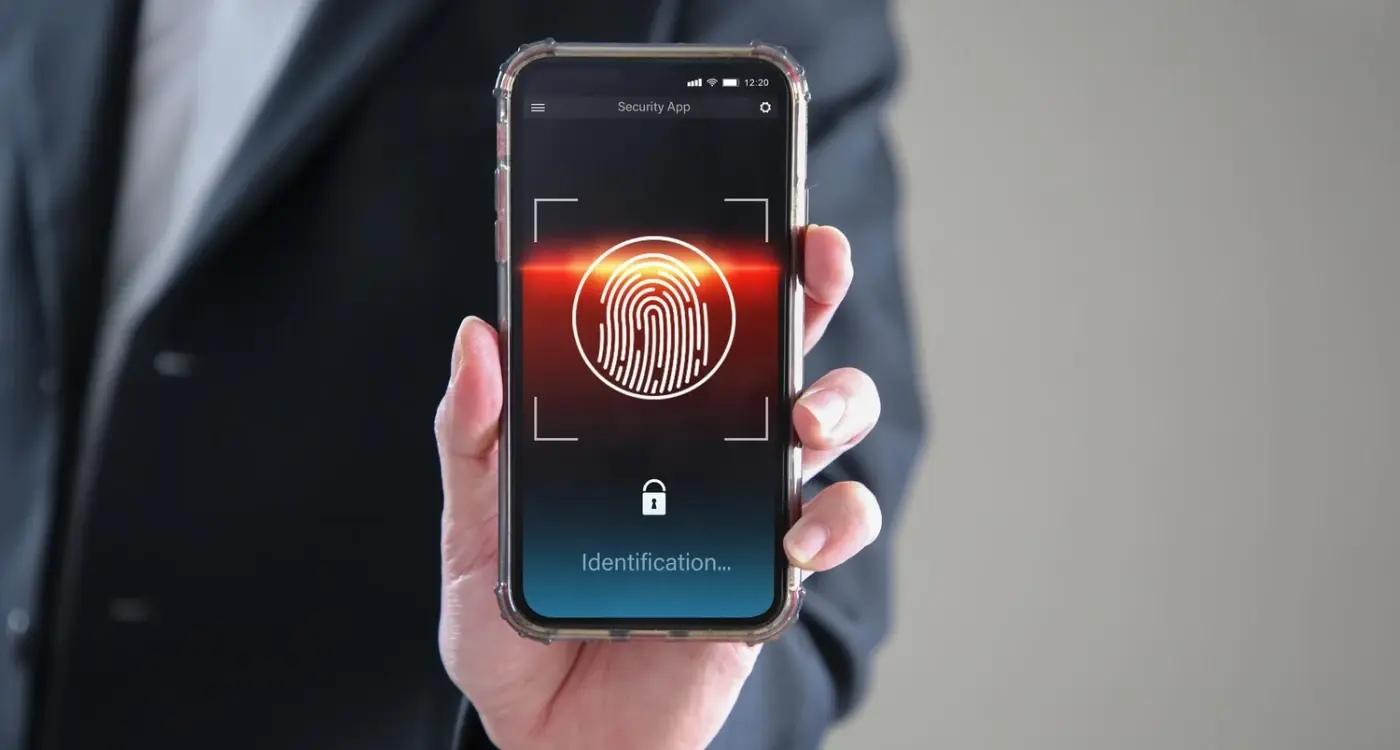What Security Measures Should Startups Implement in Their Apps?
Every single day, hackers attempt to break into mobile apps over 10,000 times—and that's just the attacks we know about. For startups building their first app, this reality can feel overwhelming. You're already juggling limited budgets, tight deadlines, and the pressure to get your product to market quickly. But here's the thing: ignoring app security isn't just risky—it's potentially catastrophic for your business.
When we work with startup founders, they often assume security is something they can worry about later. After all, why would hackers target a small startup when there are bigger fish to fry? This thinking is dangerous. Cybercriminals often target smaller companies precisely because they tend to have weaker defences. A single data breach can destroy user trust, result in hefty fines, and sink your startup before it even gets off the ground.
Security isn't a feature you can bolt on later—it needs to be baked into your app from day one
The good news is that implementing solid security measures doesn't have to break your budget or delay your launch. Throughout this guide, we'll explore practical, cost-effective ways to protect your app and your users' data. From understanding basic security principles to implementing robust authentication systems, you'll learn how to build security into your development process from the start.
Understanding App Security Basics
App security might sound like something only tech wizards need to worry about, but trust me—it's something every startup founder should understand. Think of it as the locks on your front door; you wouldn't leave your house wide open, so why would you leave your app vulnerable?
At its core, app security is about protecting three main things: your users' data, your business information, and the app itself from being tampered with. When I'm working with startups, I often see teams who think security is something they can add later—wrong! Security needs to be baked in from day one, not sprinkled on top like icing on a cake.
The Three Pillars of App Security
Every secure app is built on three foundations. First, there's confidentiality—making sure only the right people can see sensitive information. Second is integrity, which means your data can't be changed or corrupted without permission. Third is availability; your app needs to work when users need it, not crash or become unavailable due to attacks.
- Confidentiality protects sensitive user data from prying eyes
- Integrity stops unauthorised changes to your app or data
- Availability keeps your app running smoothly for legitimate users
Security isn't just about preventing hackers—it's about building trust with your users and protecting your reputation.
Common Security Threats Facing Startups
Working with startups over the years, I've seen how cybersecurity threats can completely derail a promising app before it even gets off the ground. The reality is that hackers don't care if you're a two-person team working from a coffee shop or a funded startup with offices—they'll target anyone with valuable user data.
Data breaches are probably the most damaging threat you'll face. When user information gets stolen, it doesn't just hurt your reputation; it can destroy the trust you've worked so hard to build. I've watched startups lose everything because they didn't protect their users' personal details properly.
Most Common Attack Methods
- Weak password policies that let hackers guess user credentials
- Insecure data storage that leaves sensitive information exposed
- Man-in-the-middle attacks that intercept data during transmission
- Code injection attacks that exploit poorly written software
- Phishing attempts targeting your users directly
Social engineering attacks are becoming more sophisticated too. Hackers will research your team on social media, then contact employees pretending to be colleagues or clients to gain access to systems.
Start thinking about app security from day one, not after you've built everything. It's much cheaper and easier to build security in than to bolt it on later.
The good news? Most of these threats can be prevented with proper planning and the right security measures. That's what we'll explore in the next chapters.
Data Protection and User Privacy
Right, let's talk about something that keeps me up at night—data protection and user privacy. I've worked with startups who thought they could just grab whatever user data they wanted and figure out the legal stuff later. Big mistake! Privacy regulations like GDPR in Europe and various state laws in the US mean you need to get this right from day one, not as an afterthought.
Your app needs to be transparent about what data you're collecting and why. Users should know exactly what information you're gathering—whether that's their location, contacts, or browsing habits. And here's the thing: you should only collect what you actually need. I've seen apps request access to everything from camera to microphone when they only need basic profile information.
Privacy-First Design Principles
Building privacy into your app from the ground up isn't just good practice—it's becoming legally required in many places. Start with data minimisation; only collect what serves your app's core function. If you're building a weather app, you don't need access to users' photo libraries.
- Implement clear consent mechanisms that explain data usage
- Provide easy-to-find privacy settings within your app
- Allow users to delete their data completely
- Use encryption for sensitive information storage
- Regular audit what data you're storing and why
Technical Implementation
The technical side involves encrypting data both in transit and at rest. Use secure APIs for data transmission and implement proper session management. Store minimal personal data locally on devices and always hash sensitive information like passwords.
Secure Development Practices
Building security into your app from day one isn't just smart—it's the only way to do it properly. I've seen too many startups try to bolt security on afterwards and it never works out well. The best approach is to weave security best practices into every stage of development, from the very first line of code to the final deployment.
Code Security Fundamentals
Your developers need to follow secure coding standards religiously. This means validating all user inputs, encrypting sensitive data both at rest and in transit, and never storing passwords in plain text. Think of it like building a house—you wouldn't wait until the roof is on before checking if the foundation is solid.
The most expensive security fix is the one you have to make after your app is already live and users' data has been compromised
Regular Security Reviews
Schedule regular code reviews with security in mind. Every pull request should be checked for potential vulnerabilities, not just functionality. Use automated security scanning tools during development—they'll catch common issues before they become problems. And don't forget about third-party libraries; they need regular updates and security patches too.
Remember, secure development isn't about making your app harder to build—it's about making it harder to break. When cybersecurity is baked into your development process, data protection becomes second nature rather than an afterthought.
Authentication and Access Control
Right, let's talk about authentication and access control—two security measures that can make or break your app's security posture. I've seen too many startups get this wrong, and the consequences can be pretty severe. Authentication is simply proving who someone is when they try to use your app, whilst access control determines what they can do once they're inside.
The foundation of good authentication starts with strong password requirements. Don't just ask for "password123"—require a mix of letters, numbers, and special characters. Better yet, implement two-factor authentication (2FA) where users get a code sent to their phone or email. Yes, it adds an extra step, but it's worth it when hackers try to break in.
Essential Authentication Methods
- Multi-factor authentication with SMS or authenticator apps
- Biometric authentication like fingerprints or face recognition
- Social login integration (Google, Facebook, Apple)
- Single sign-on (SSO) for business applications
- Token-based authentication with automatic expiry
Access control is where you decide who can see what. Not every user needs admin privileges—in fact, most shouldn't have them. Role-based access control lets you create different permission levels, so your customer service team can't accidentally delete your entire database. Trust me, these controls save headaches later.
Testing and Monitoring for Security
Building security into your app is one thing—making sure it actually works is another beast entirely. I've seen too many startups think they've got their app security sorted, only to discover gaping holes during a proper security audit. The truth is, security testing isn't something you do once and forget about; it's an ongoing process that needs to become part of your development DNA.
Security testing comes in several flavours, each serving a different purpose. Penetration testing involves hiring ethical hackers to try breaking into your app—think of it as a controlled attack that shows you where your weaknesses are. Vulnerability scanning uses automated tools to check for known security issues, whilst code reviews involve having experienced developers examine your code line by line looking for potential problems.
Types of Security Testing
- Static Application Security Testing (SAST) - checks code without running it
- Dynamic Application Security Testing (DAST) - tests the running application
- Interactive Application Security Testing (IAST) - combines both approaches
- Penetration testing - simulated attacks by security professionals
- Security code reviews - manual examination of source code
Once your app is live, continuous monitoring becomes your best friend. Setting up automated alerts for suspicious activities, unusual login patterns, or failed authentication attempts can help you spot problems before they become disasters. Many startups skip this step because they think monitoring is expensive, but the cost of a data breach will always outweigh the price of proper security monitoring.
Start with free security scanning tools like OWASP ZAP or SonarQube before investing in premium solutions—you'd be surprised how many issues basic tools can catch.
Compliance and Legal Considerations
Right, let's talk about the bit that makes most startup founders' eyes glaze over—compliance and legal requirements. I get it, it's not the most exciting part of app development, but ignoring it can land you in seriously hot water. And trust me, legal troubles are expensive and time-consuming; two things startups can't afford.
The big one everyone's heard of is GDPR if you're dealing with European users. But there's also CCPA in California, COPPA for children's data, and loads of other regulations depending on your industry and location. Each one has different rules about how you collect, store, and use people's data.
Key Areas to Focus On
Here's what you need to get right from day one:
- Privacy policies that actually explain what you do with user data
- Terms of service that protect your business
- Cookie consent mechanisms for web-based components
- Data retention policies—you can't keep personal data forever
- User rights implementation (right to be forgotten, data portability)
- Age verification if your app might be used by children
The thing is, compliance isn't just about avoiding fines. It builds trust with your users and investors. When people see you take their privacy seriously, they're more likely to stick around and recommend your app to others.
Conclusion
Building secure apps isn't just about ticking boxes—it's about protecting your users and your business from day one. I've seen too many startups treat app security as an afterthought, only to face serious problems later when fixing things becomes much more expensive and complicated.
The good news? You don't need to be a cybersecurity expert to get the basics right. Start with secure development practices, implement proper authentication, and make data protection a priority from the beginning. Regular testing and monitoring will help you catch issues before they become real problems.
User privacy isn't negotiable anymore—people expect their personal information to be handled responsibly. When you build trust through strong security measures, you're not just protecting data; you're building a foundation for long-term success.
Remember, security isn't a one-time job. It's an ongoing process that grows with your app. Stay informed about new threats, keep your security measures up to date, and don't be afraid to get professional help when you need it. Your users—and your future self—will thank you for taking security seriously from the start.
Share this
Subscribe To Our Learning Centre
You May Also Like
These Related Guides

How Do I Ensure My Vibe Coded App Is Secure and Production-Ready?

What Mobile Technologies Will Replace Passwords?



